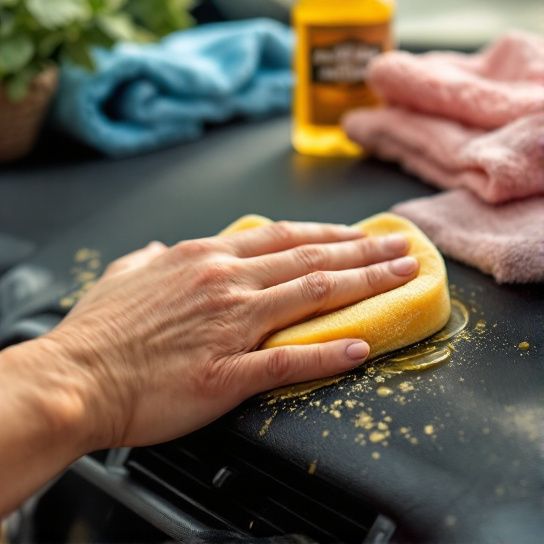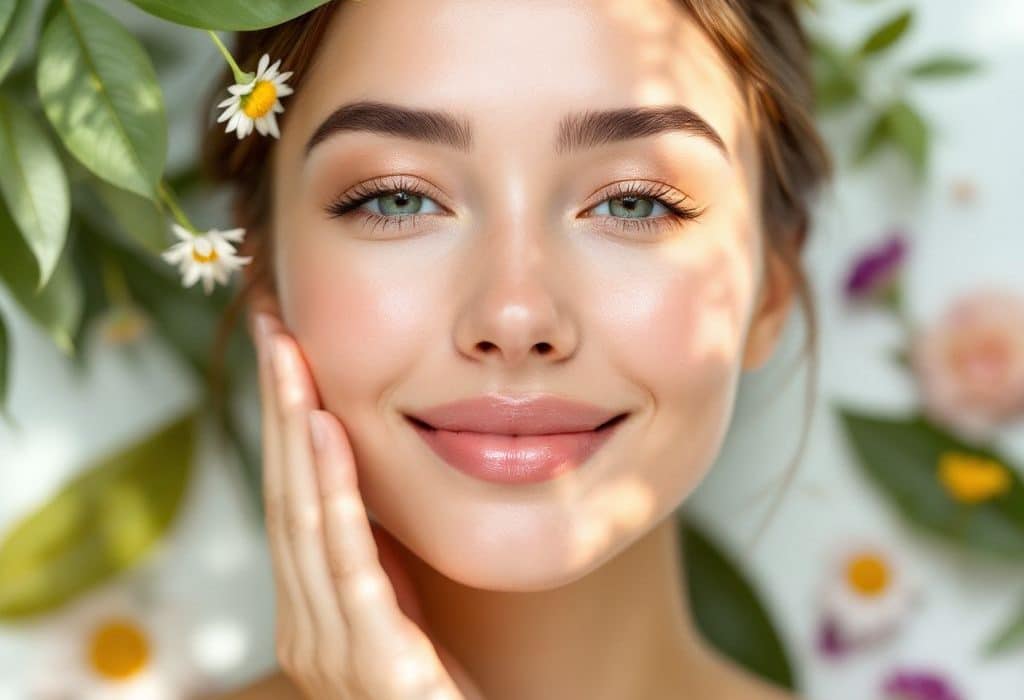Hey there, skin-saver seeker! If you’ve ever looked at those persistent blemishes in the mirror and thought, “Why are you still here?” you’re not alone. We’ve all been there, scrubbing, blotching, and sometimes crying (just a little, it’s okay) in front of our mirror hoping for flawless, dewy skin. But here’s the good news! Your blissful skin can be real, and we’re doing it the natural way.
One of the best approaches is a spot treatment guide that brings natural beauty products to the forefront. Trust me, these ingredients are like little warriors ready to do battle with those pesky blemishes when used right.
Understanding Your Skin and the Target Method
First things first, understanding your skin is like understanding a quirky friend. It has its temperament and needs attention in those special areas now and then. The approach we’re diving into uses the “Target” method—because targeting those problem spots instead of treating your whole face as a warzone can be gentler and just as effective.
**Identifying Your Skin Type:**
- Oily Skin: Often shines before lunch.
- Dry Skin: Flakey and tight by day’s end.
- Combination Skin: A little of everything; unpredictable!
- Sensitive Skin: Mood swings aplenty!
Got your type figured out? Perfect. That makes choosing the right natural beauty products way easier! Enjoyable skin problem-solving starts here.
Natural Ingredients You’ll Love and Their Magic List
Okay, onto the real stuff now. Now that you’ve acquainted yourself with your skin type, let’s chat about natural ingredients that’ll become your skin care allies. Here’s how we’ll spot treat those spots and get that natural glow back. These ingredients are key players in the realm of natural beauty products. Let’s list out some favorites that you’ve probably already heard whispers about.

**Tea Tree Oil** Works wonders as an antiseptic and anti-inflammatory. Dab a few drops on unwanted bumps and let its natural powers work overnight.
**Aloe Vera** Packed with polysaccharides, aloe vera soothes irritation and redness. Just slather on some gel and let your skin drink it up like a much-needed smoothie on a hot day.
**Honey** This golden syrup isn’t just great on pancakes; it’s antimicrobial and moisturizing! Keeping it simple – a honey mask can double your skin-love points.
**Turmeric** Not only is this a staple in your spice drawer, it’s a natural antibacterial agent with fantastic brightening effects. Mix a pinch with yogurt and apply it for that luminous radiance.
**Camomile** Calming yet effective, camomile can get the redness out faster than you can yell its name thrice! Use chamomile-infused creams.
The idea with these natural beauty products isn’t just knowing their uses, but understanding actively how they harmonize with diverse skin types to spot treat effectively.
Finding the Secret Weapon: The Spot Treatment Process
Let’s break the whole spot treatment process down a bit, so you know exactly where to start and what steps to follow for that skin worth flaunting.
Step 1: Kick Things Off – Cleanse Gently
Alright, here’s something you’ll thank me for. Start with a clean slate, kiddo! Before you pinpoint—literally—slap on the natural brilliance by gently cleansing your face. Use a suitable natural cleanser that won’t strip away all your skin’s precious oils.
Step 2: Tone and Prep

Get ready with a non-alcoholic, natural toner! Your pores will thank you. Toning after cleansing gets the skin ready for action, opening up the cells to embrace nutrient-rich goodies.
Step 3: The Magic – Target Central
Spot treat those rough patches! Dab your chosen natural ingredient on troublesome areas. It’s like gently whispering to your skin to let go kindly of its chaos. Whether it’s a dot of tea tree oil, a dollop of honey, or a smear of aloe vera, it’s time for those parts to stand still.
Step 4: Moisturize and Seal
This part is like giving your skin a hug after some tough love. Use a lightweight natural moisturizer to settle everything in place. Trust me, this sealing coat of goodness sustains the cycle until the next time.
Step 5: Night vs. Day – Know When to Attack
Timing is key in spot treatment. Remember your skin regenerates during your beauty slumber. Trust tea tree oil or a dab of honey mask on prepped skin before hitting the sack. In contrast, use soothing elements like chamomile during morning rituals to ease into the day less stressful for your skin.
Comparison: Nature vs. Chemical Spot Treatments
It’s fair to acknowledge that plush, overnight acne gel in sparkling packaging; it beckons through drugstore aisles with promises like shooting stars. But let’s table that craving as we scoop through comparisons.
| Feature | Natural Beauty Products | Chemical Spot Treatments |
|---|---|---|
| Ingredients Origin | Plant-based, pure, minimal processing | Synthetic, lab-formulated |
| Skin Sensitivity Reactions | Gentler on sensitive skin, fewer irritations | Potential adverse effects, irritation/rashes |
| Long-term Effects | Balanced, enhance skin lifestyle over time | Quick solutions, sometimes addictive reliance |
| Cost | Generally affordable, more DIY options | Varied, trending towards pricier |
| Environmental Impact | Eco-friendly, biodegradable substances | Non-renewables, sometimes harmful |
Key Takeaways on Spot Treating with Natural Beauty Products

Cue the honest opinion? Blending these goodies into your routine isn’t rocket science, yet promises rewards rooted deeply in ecological benefits, simplicity, and genuine self-care. There’s an intimacy with natural beauty products rarely mirrored by synthetic possibilities.
- Assess Your Skin: Always start by understanding what’s true of your skin nature.
- Be Patient: Work these remedies into regular routine slowly. It’s zen—not impatience—that prevails!
- Consistency Over Intensity: Regular, moderate application beats harsh one-offs.
Pitfalls to Steer Clear Of
Even with nature’s bounty, things can go a little haywire if we aren’t paying heed. These pointers aren’t just scarf-accompanying advice but spot saviors.
- Never Rush the Patch Test
- New introductions? Always patch test! Avoid construction-zone level mishaps.
- Moderation Over Zeal
- You aren’t making soup; too many ingredients thrumming isn’t the goal. Choice and simplicity lead to wins.
- Adapt Seasonally
- Yup, that natural face prep changes with board shorts and wool jackets. Adapt routines seasonally and innovate when needed.
Final Wrap-Up
Embracing natural beauty products for facial spot treatment not only protects those precious epidermal layers but connects you intimately with simple, rewarding skincare. More than felt tip bangs, impressive gimmickry, or twinkling potion-bottles, natural care sings softer magic in rhythm with the earth itself.
Next time those acne invaders sneak up, hold back from frantic asking if aliens did it. Rest easy knowing it’s nature-friendly spot treatment, cinching us closer to glowing every day. Got any secret meals for your skin? Share it below – because there’s nothing better than gushing over shared beauty boot camp tips. Cheers to clear skin and happy faces all around!
Frequently Asked Questions
What does it mean if a product is labeled as “natural” in the beauty industry?
If a product is labeled as “natural,” it does not necessarily mean it contains no synthetic chemicals. The term “natural” is not defined by the U.S. government, so it is crucial to read the ingredient list to understand what the product contains. Natural cosmetics typically include ingredients found in nature, such as mica, silica, and clay, without significant chemical alteration[1][3].
Why aren’t all cosmetics natural, even if they are considered better for the skin?
Several reasons contribute to why not all cosmetics are natural. Cost is a significant factor, as organic ingredients are generally more expensive than synthetic ones. Additionally, natural ingredients can be challenging to blend and preserve without using proven chemicals, which are necessary for maintaining the product’s stability and preventing bacterial growth. The desired qualities in cosmetics, such as lightness and easy absorbability, often require the use of well-known chemicals[1][3].
When should someone consider using natural beauty products or skincare?
Consider using natural beauty products or skincare if you have a known allergy to chemical ingredients such as preservatives. However, it is essential to check the ingredients and perform a patch test, as natural products can also cause allergies. Natural skincare can be beneficial for those seeking gentler, more recognizable ingredients, but it may not work for everyone due to individual skin types and sensitivities[1][3].
What are the potential benefits and challenges of using natural beauty products?
Natural beauty products are often gentler on the skin and free from harsh chemicals, which can reduce irritation and allergies. However, they can be more costly due to the use of ethically sourced and organic ingredients. Additionally, natural products may have variations in consistency, color, and scent due to the natural variation of the ingredients used. It is important to look for certifications from recognized organizations to ensure the product meets natural and organic standards[3][5].
References

